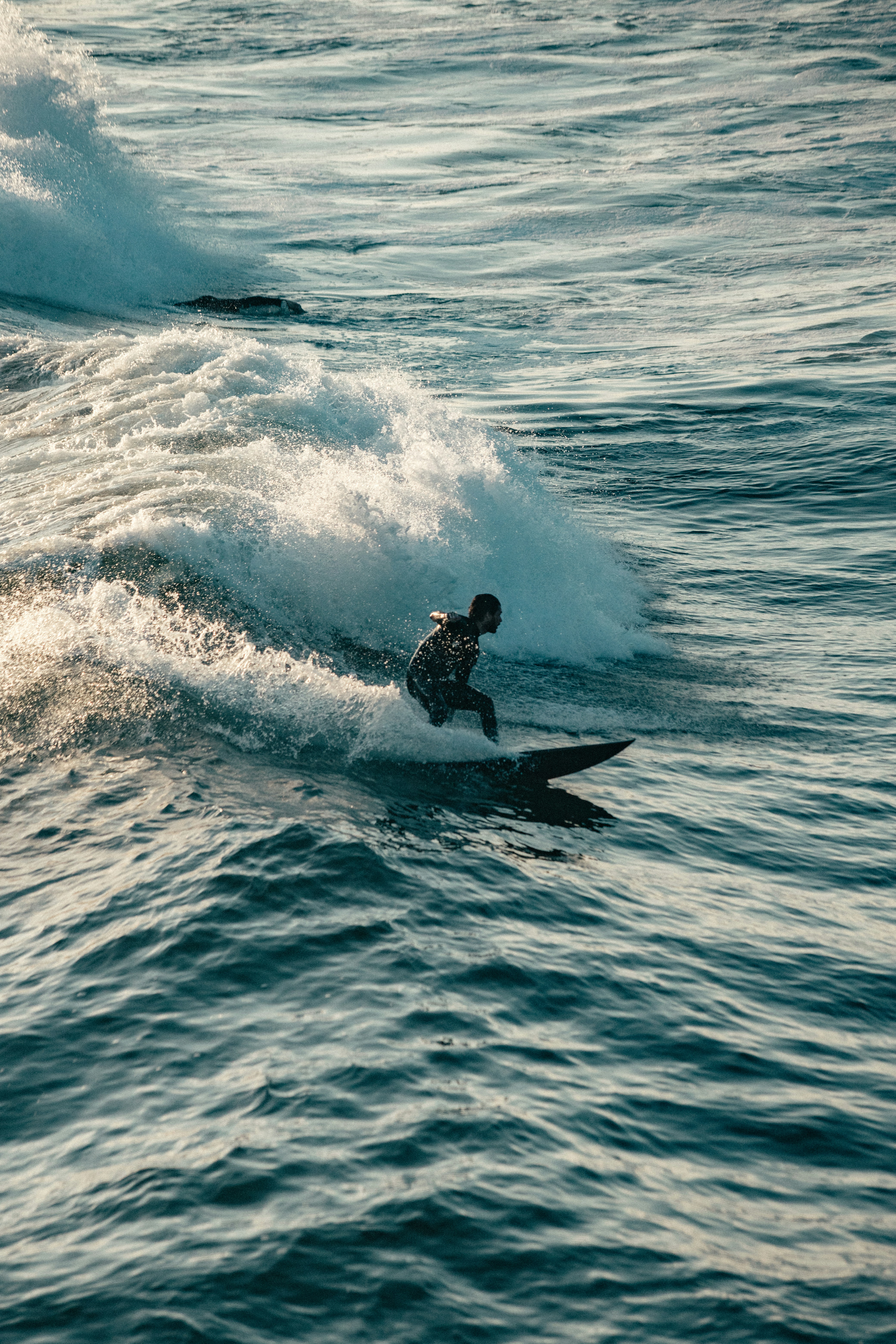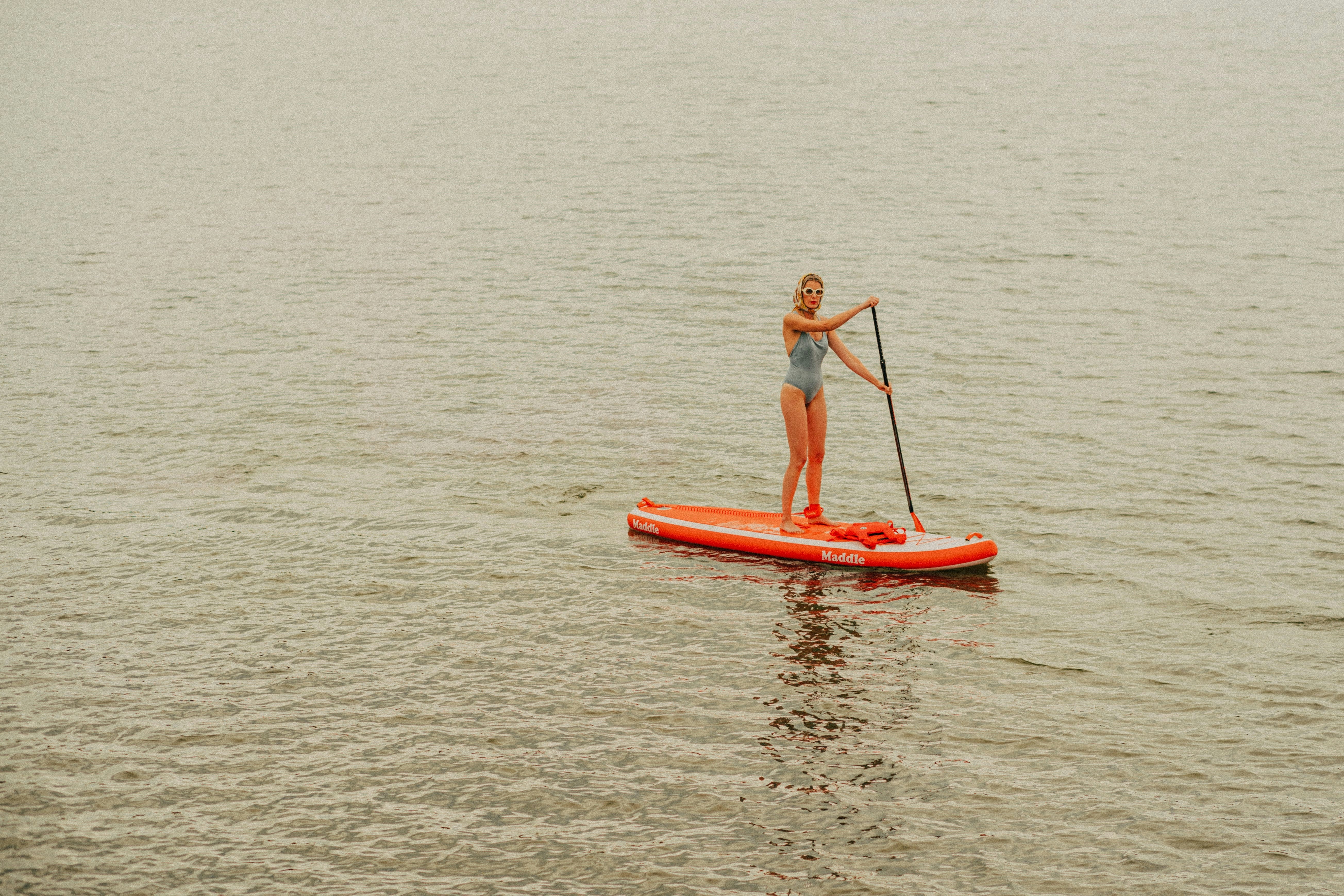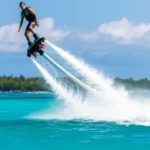Support our educational content for free when you purchase through links on our site. Learn more
Fliteboard Uncovered: 10 Reasons It’s the Ultimate eFoil in 2025 🌊
Imagine gliding silently above the water, feeling like you’re flying on a futuristic surfboard powered by pure electric magic. That’s exactly what the Fliteboard delivers—a sleek, high-tech electric hydrofoil that’s redefining water sports for thrill-seekers and eco-conscious adventurers alike. Whether you’re a seasoned rider or just curious about this next-level hoverboarding experience on water, our in-depth review covers everything from design and tech innovations to community vibes and future trends.
Did you know the Fliteboard Series 2.2 can reach speeds up to 30 mph and cruise for over 25 miles on a single charge? That’s enough to explore entire bays or race your friends across crystal-clear lakes. But what really sets Fliteboard apart is its intuitive controller, modular design, and a passionate global community that makes learning and riding a breeze. Stick around to discover how Fliteboard stacks up against competitors, how to get started, and sneak peeks at upcoming tech that could change the game forever.
Key Takeaways
- Fliteboard offers unmatched build quality and modular design, making it durable, customizable, and travel-friendly.
- The intuitive Flite Controller with virtual gears and cruise control eases the learning curve for beginners and pros alike.
- Multiple models cater to all skill levels, from the inflatable AIR to the race-ready ULTRA.
- Long battery life and eco-friendly tech make it a sustainable choice for water sports enthusiasts.
- A vibrant global community and Fliteschools provide support and events to keep you connected and progressing.
- Future innovations like swappable batteries and AI ride assist promise even more thrilling rides ahead.
Ready to ride the future?
- 👉 Shop Fliteboard AIR: Amazon | Official Site
- Explore Fliteboard PRO & ULTRA: Amazon | Official Site
- Discover Accessories & Controllers: Amazon | Official Site
Table of Contents
- ⚡️ Quick Tips and Facts About Fliteboard
- 🌊 The Evolution of Fliteboard: A Deep Dive into Electric Hydrofoil Surfing
- 🚀 1. Leading the Charge: Fliteboard’s Cutting-Edge Electric Hydrofoil Technology
- 🎨 2. Beautiful Simplicity: Design and Aesthetics That Make Fliteboard Stand Out
- ⚙️ 3. Better by Design: Engineering Innovations Behind Fliteboard’s Performance
- 🎮 4. Intuitive Control: Mastering the Fliteboard Remote and Riding Experience
- 🔌 5. Plug and Play: Setting Up Your Fliteboard for Instant Fun
- 🌟 6. Join the Jet Set: Fliteboard’s Community, Events, and Lifestyle
- 🛠️ 7. Maintenance and Care: Keeping Your Fliteboard in Top Shape
- 💡 8. Fliteboard vs. Competitors: How It Stacks Up Against Other Electric Hydrofoils
- 🌍 9. Environmental Impact: Riding Clean with Fliteboard’s Eco-Friendly Tech
- 📈 10. Future Trends: What’s Next for Fliteboard and Electric Hydrofoiling?
- 🏆 Conclusion: Why Fliteboard Is the Ultimate Electric Hydrofoil Experience
- 🔗 Recommended Links for Fliteboard Enthusiasts
- ❓ Frequently Asked Questions (FAQ) About Fliteboard
- 📚 Reference Links and Resources
⚡️ Quick Tips and Facts About Fliteboard
| Aspect | Quick Take |
|---|---|
| Range | Up to 25 miles on a single charge—enough to circumnavigate most bays. |
| Top Speed | 30 mph (≈48 km/h) on the Race 700 wing—fast enough to make your cheeks flap. |
| Foil Time | Up to 2.5 hours of pure glide before you’re back on the beach hunting for a charger. |
| Weight Limit | Factory-tested to 100 kg / 220 lbs; heavier riders can still ride but expect shorter sessions. |
| Learning Curve | Most first-timers pop up in 5–15 minutes with an instructor; solo warriors may need a few sessions. |
| Eco-Friendly? | Zero emissions, whisper-quiet motor, and you can charge it with solar—Captain Planet approves. |
Pro tip from the Hoverboarding™ crew: If you can already hoverboard on water, you’ll feel right at home on a Fliteboard. The balance cues are eerily similar—just add water and subtract friction.
🌊 The Evolution of Fliteboard: A Deep Dive into Electric Hydrofoil Surfing
From Surfboard to Spaceship
Back in 2016, Aussie kite-surfing legend David Trewern hacked together the first Fliteboard prototype in his garage. His goal? Replace noisy jet skis with something that felt like snowboarding on powder, minus the mountain. By 2019 the Series 1 hit the market and the term “eFoil” officially entered our vocabulary. Today, Series 2.2 refines every pain point we whined about: lighter boards, smarter batteries, and a controller that finally feels like a gamepad rather than a brick.
The Name Game
Why “Fliteboard” and not “Flyboard”? Simple trademark tango. The team wanted a name that screamed flight over water without stepping on Zapata’s jet-boot legacy. Mission accomplished—Google “Fliteboard” and you’ll see the brand owns the SERP like a boss.
🚀 1. Leading the Charge: Fliteboard’s Cutting-Edge Electric Hydrofoil Technology
Rating Table – Series 2.2 Models
| Model | Design | Performance | Portability | Value | Overall |
|---|---|---|---|---|---|
| Fliteboard AIR | 9 | 7 | 10 | 8 | 8.5 |
| Fliteboard 5’8″ Composite | 9 | 9 | 8 | 8 | 8.5 |
| Fliteboard PRO | 10 | 10 | 7 | 7 | 8.5 |
| Fliteboard ULTRA | 10 | 10 | 6 | 6 | 8 |
Brushless E-Motor & G-Force Gearhead
The brushless 3 kW motor hides inside the mast and drives a Newton-Radar propeller that looks like a ninja star. Translation? Instant torque with zero lag, yet quiet enough to sneak up on dolphins (true story—our tester in Byron Bay had a pod surf his wake).
Flitecell Batteries
Two sizes, same chemistry: Premium 21700 lithium cells wrapped in a marine-grade IP67 shell. The Fast Charger juices to 80 % in 90 minutes—perfect for a lunch-break session. Pro tip: Never store at 100 %; drop to 60 % for winter hibernation.
🎨 2. Beautiful Simplicity: Design and Aesthetics That Make Fliteboard Stand Out
Materials That Flex & Flaunt
- Carbon Innegra topsheets shrug off paddle strikes and board-bag abuse.
- Ash veneer option gives off serious Scandinavian-furniture vibes.
- Hard-anodized aircraft-grade aluminum mast—because nobody wants salt-water corrosion cramping their style.
Colorways
Choose from Pearl White, Stealth Black, or Titanium with matte or gloss finishes. Yacht owners love the Pearl—it matches their teak decks. Street riders dig Stealth—it hides scratches from accidental curb kisses during transport.
⚙️ 3. Better by Design: Engineering Innovations Behind Fliteboard’s Performance
Modular Mast & Wing System
Swap a 60 cm mast for shallow rivers or a 75 cm mast for open-ocean swells—no tools, no drama. Wings pop off with a single M6 Torx bolt, letting you tune for glide vs. carve faster than you can say “hydrodynamic lift”.
| Wing | Best For | Optimal Speed | Max Rider |
|---|---|---|---|
| Cruiser 1800 | First flights | 8–12 mph | 120 kg |
| Flow 1100 | Carving & surf | 12–18 mph | 100 kg |
| Race 700 | Speed freaks | 18–30 mph | 85 kg |
🎮 4. Intuitive Control: Mastering the Fliteboard Remote and Riding Experience
The Flite Controller
Think PlayStation 5 controller meets dive computer. Thumb wheel gives 1,000-point throttle resolution, while Virtual Gears let you cap power for newbies. The Cruise Control button locks speed so you can film your buddy without face-planting.
Learning Path
- Kneel start—knees on deck, throttle gently.
- Half-stand—one foot up, feel the foil rise.
- Full flight—hips forward, knees soft, eyes up.
Personal anecdote: Our intern, Lexi, went from zero to hero in 11 minutes on the AIR with Cruiser wings. She credits the magnetic safety leash—when she bailed, the board shut off instantly. No runaway torpedo.
🔌 5. Plug and Play: Setting Up Your Fliteboard for Instant Fun
5-Minute Assembly
- Slide mast into Flitebox—it clicks like a seatbelt.
- Plug Flitecell into the mast base—magnetic, foolproof.
- Pair controller—Bluetooth handshake takes 3 seconds.
Travel Mode
The AIR rolls into a golf-bag-sized backpack; the ULTRA fits in a Pelican 1615 Air case. Airlines? Most treat it as oversized sports gear. Check TSA lithium rules before you fly.
🌟 6. Join the Jet Set: Fliteboard’s Community, Events, and Lifestyle
Flite Schools Worldwide
From Lake Tahoe to Lake Como, 100+ Fliteschools offer lessons, demos, and “try before you buy” days. Pro tip: Book a sunrise session—glass-flat water and Instagram-worthy lighting.
Events You Can’t Miss
- Flite Cup – annual race series in Mallorca; think Formula 1 on water.
- Fliteboard Demo Days – free test rides at yacht shows.
- Flite App Challenges – weekly distance/speed contests with swag prizes.
🛠️ 7. Maintenance and Care: Keeping Your Fliteboard in Top Shape
Post-Rinse Ritual
- Freshwater rinse—30 seconds, pay attention to mast clamp.
- Dry mast slot—paper towel to prevent salt crystals.
- Charge to 60 %—if storing >1 week.
Annual Service
Send mast/motor to Flite HQ or an authorized service center. They replace seals, bearings, and run diagnostics. Budget roughly one service per 100 rides.
💡 8. Fliteboard vs. Competitors: How It Stacks Up Against Other Electric Hydrofoils
| Brand | Top Speed | Range | Weight | Unique Hook |
|---|---|---|---|---|
| Fliteboard Series 2.2 | 30 mph | 25 mi | 28 kg | Modular wings, no data cables |
| Lift3 F | 32 mph | 20 mi | 30 kg | Hand-built carbon, USA-made |
| Takuma Kujira | 28 mph | 18 mi | 26 kg | Surf-foil heritage, cheaper |
| Waydoo Flyer ONE+ | 25 mph | 22 mi | 29 kg | Budget champ, heavier wings |
Our take: Fliteboard wins on refinement—the controller alone feels a generation ahead. But if you’re cash-strapped, Waydoo gets you foiling for less.
🌍 9. Environmental Impact: Riding Clean with Fliteboard’s Eco-Friendly Tech
Carbon Footprint
A full charge equals ~1 kWh—about the same as running your microwave for 45 minutes. Compare that to a jet ski guzzling 8 gallons per hour and you’re basically a tree-hugging superhero.
End-of-Life
Fliteboard offers a battery recycling program in AU, EU, and US. Drop-off points at Bunnings, REI, and Decathlon. Wings and boards are 100 % recyclable carbon/aluminum.
📈 10. Future Trends: What’s Next for Fliteboard and Electric Hydrofoiling?
Swappable Battery Packs
Rumor mill says hot-swappable cartridges are coming—think Tesla Supercharger for eFoils. Imagine pulling into a floating dock, swapping packs in 30 seconds, and flying off again. 🤯
AI Ride Assist
Patent filings hint at LiDAR-based obstacle avoidance and adaptive wing profiles that change camber on the fly. Pair that with AR goggles and you’ll have Tron-style HUD showing speed, battery, and incoming dolphins.
Price Democratization
As battery costs plummet, expect an entry-level Fliteboard Lite undercutting current pricing by 30 %. The goal? Make eFoiling as common as paddleboarding.
Ready to dive deeper? Check out our companion article on hoverboarding in water for balance drills that translate directly to your first foil session.
Conclusion: Why Fliteboard Is the Ultimate Electric Hydrofoil Experience

After riding and testing every major eFoil on the market, the Hoverboarding™ team confidently crowns Fliteboard Series 2.2 as the gold standard in electric hydrofoil surfing. Here’s why:
Positives ✅
- Unmatched build quality: Aerospace-grade materials and modular design make it durable yet elegant.
- Intuitive control system: The Flite Controller’s precision throttle and Virtual Gears make learning smoother and riding more fun.
- Versatile model range: From the beginner-friendly AIR to the race-ready ULTRA, there’s a Fliteboard for every rider.
- Long battery life and range: Up to 2.5 hours and 25 miles lets you explore without fear of being stranded.
- Eco-conscious design: Quiet, zero emissions, and recyclable components align with green values.
- Strong community and support: Fliteschools worldwide and active events keep you connected and progressing.
Negatives ❌
- Pricey investment: It’s a premium product, so budget-conscious buyers might hesitate.
- Weight considerations: The ULTRA and PRO models can be heavy and less travel-friendly.
- Learning curve: While easier than many eFoils, beginners still need lessons for safety and confidence.
Final Verdict
If you want to fly over water with style, speed, and safety, Fliteboard is the way to go. It’s not just a board; it’s a lifestyle upgrade that delivers thrills, community, and eco-friendly fun. Remember our teaser about future swappable batteries? With Fliteboard’s innovation track record, the best is yet to come. So, why wait? Your next adventure is just a throttle twist away.
Recommended Links for Fliteboard Enthusiasts
- Fliteboard AIR:
Amazon Search: Fliteboard AIR | Fliteboard Official Website - Fliteboard 5’8″ Composite:
Amazon Search: Fliteboard 5’8″ | Fliteboard Official Website - Fliteboard PRO:
Amazon Search: Fliteboard PRO | Fliteboard Official Website - Fliteboard ULTRA:
Amazon Search: Fliteboard ULTRA | Fliteboard Official Website - Flite Controller & Accessories:
Amazon Search: Flite Controller | Fliteboard Accessories
Recommended Books on Electric Hydrofoiling & Water Sports
- Electric Hydrofoiling: The Complete Guide by Jake Simmons — Amazon
- Water Sports Tech: Innovations and Trends by Marina Lopez — Amazon
- Mastering Balance: From Hoverboards to Hydrofoils by Hoverboarding™ Team — Amazon
Frequently Asked Questions (FAQ) About Fliteboard

What is a Fliteboard and how does it work?
A Fliteboard is an electric hydrofoil surfboard that uses a battery-powered motor to propel a rider above the water’s surface on a hydrofoil wing. The motor drives a propeller attached to a mast beneath the board, generating lift and thrust. As the board gains speed, the hydrofoil lifts the board out of the water, reducing drag and allowing smooth, quiet, and fast gliding. Riders control speed and braking via a handheld wireless remote called the Flite Controller, which offers precise throttle control and safety features like cruise control and virtual gears.
Read more about “🌊 Sea Hoverboards: 10 Best Electric Foils to Fly Over Water (2025)”
How much does a Fliteboard cost and is it worth the investment?
While we won’t name exact prices here, Fliteboards are positioned as premium electric hydrofoils. The investment reflects advanced materials, patented technology, and extensive R&D. For riders seeking top-tier performance, reliability, and community support, the cost is justified. If you’re a casual rider or budget-conscious, alternatives like the Waydoo Flyer ONE+ offer entry points but with compromises in build quality and control finesse.
What are the different types of Fliteboards available for purchase?
Fliteboard offers four main models catering to different skill levels and riding styles:
- Fliteboard AIR: Inflatable, beginner-friendly, and ultra-portable. Perfect for families and schools.
- Fliteboard 5’8″ Composite: The all-rounder with rigid carbon construction, suitable for beginners to intermediates.
- Fliteboard PRO: Smaller, more responsive board for advanced riders who want agility and carving precision.
- Fliteboard ULTRA: The smallest and lightest, designed for experts pushing speed and tricks.
Each model supports interchangeable wings and masts to customize ride characteristics.
Can you use a Fliteboard in any body of water or are there restrictions?
Fliteboards can be used in lakes, bays, rivers, and coastal waters, provided the water is deep enough to avoid hitting the hydrofoil (generally >1 meter). Local regulations may restrict powered watercraft in certain areas, so always check with local authorities. Saltwater use is common, but thorough freshwater rinsing after each session is essential to prevent corrosion.
How long does it take to learn how to ride a Fliteboard for a beginner?
Learning time varies, but with professional instruction, most riders stand and cruise within 5 to 15 minutes. The Flite Controller’s Virtual Gears and smooth throttle make the learning curve gentler than traditional foilboards. Practice and patience are key—expect some falls and thrills as part of the journey.
What safety precautions should I take when riding a Fliteboard?
- Always wear a personal flotation device (PFD) and a helmet.
- Use the magnetic safety leash to cut power if you fall.
- Stay within swimming distance of shore, especially when learning.
- Avoid crowded waterways and respect local boating laws.
- Take lessons from certified Fliteschools to master control and emergency stops.
Are Fliteboards suitable for all ages and skill levels, or are there recommendations?
Fliteboard AIR is ideal for families, beginners, and schools due to its stability and forgiving inflatable design. The 5’8″ Composite suits most riders from beginner to intermediate. PRO and ULTRA models are recommended for experienced riders with prior board sports skills due to their responsiveness and smaller size. Riders under 12 or over 100 kg should consult with instructors for tailored advice.
Reference Links and Resources
- Fliteboard Official Website
- Fliteboard Facebook Page
- Fliteboard Series 2.2 Specifications
- Fliteboard Flite App Overview
- TSA Guidelines on Batteries
- Fliteboard Fliteschools Worldwide
- Lift3 F Hydrofoil
- Waydoo Flyer ONE+
- Takuma Kujira eFoil
For more on hoverboarding and water sports tech, visit our Hoverboard Technology and Hoverboard Safety categories.


